Lift (The Coanda Explanation)
So why does a hang glider fly and why does it not simply fall to the ground? The answer is lift, but what is it? To answer this question we'll use a series of illustrations:
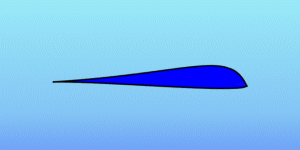
30 Nov 1999
Figure 1 shows a cross section of a hang glider wing. In order to understand how lift works we need to consider what happens when the wing is in motion. For this example, we will imagine that the wing is flying from left to right.
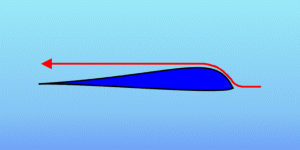
30 Nov 1999
As the wing moves through the air we can imagine the path of an air molecule, depicted by the red line in Figure 2. As the air hits the leading edge (the front of the wing), the air is deflected or pushed upward towards the top of the wing. When it is clear of the leading edge, we would expect the air to continue in a straight line as shown in the diagram - for it to do something else, a force must act on it.
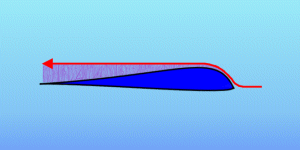
30 Nov 1999
However, if the air were to travel in a straight line it would leave a gap (the shaded area in figure 3). This cannot happen as there must be something there, so a force is applied to pull the air back down onto the wing (the yellow arrow in figure 4); the air molecule, for lack of a better words, wants to follow the curve of the wing. This is called the Coanda Effect.
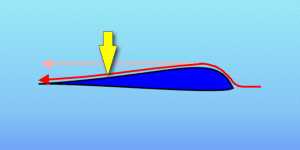
30 Nov 1999
Now a clever scientist by the name of Newton came up with several rules about force and motion and one such rule (Newton's 3rd rule) states that 'For every action there is an equal but opposite reaction'. So for our wing this means that if a force is being applied to the air to allow it to follow the surface of the wing (yellow arrow, figure 4) then there should be another force of equal magnitude in the opposite direction. This force is shown in figure 5 as a red arrow and this is the upward force known as lift. This is what keeps a hang glider in the air.
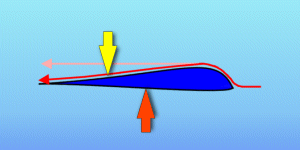
30 Nov 1999
Remarks
Another more common explanation of lift is that known as the Bernoulli principle. Although there is nothing wrong with this explanation, it does make a few assumptions that do not accurately represent what is actually happening. This particular explanation breaks down when considering inverted flight (upside down) - something that you wouldn't normally want to do in a hang glider!


This page currently has no comments.